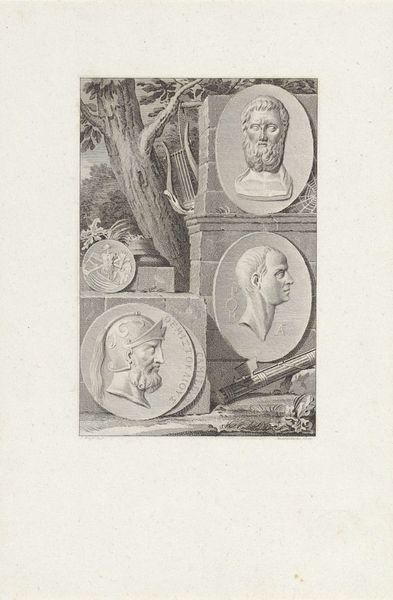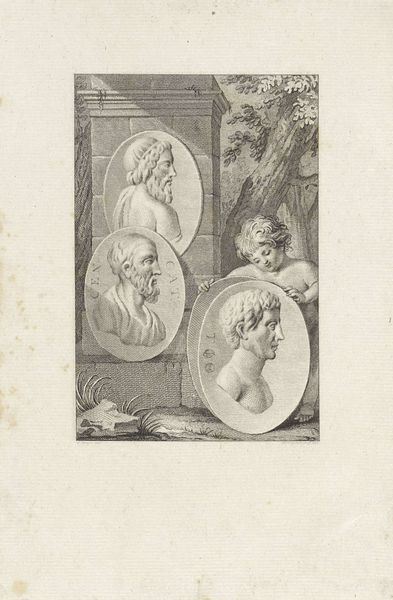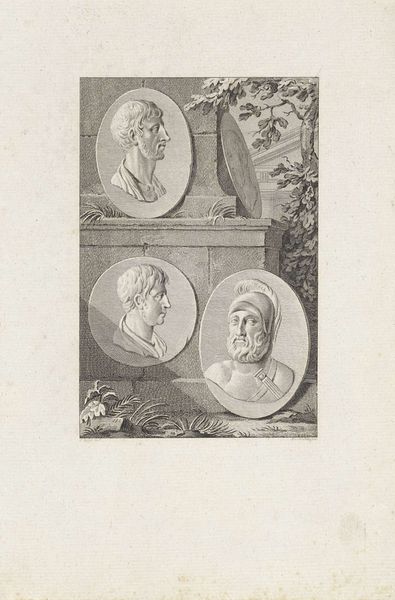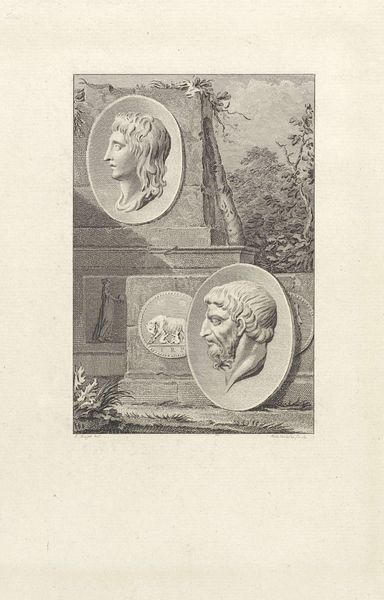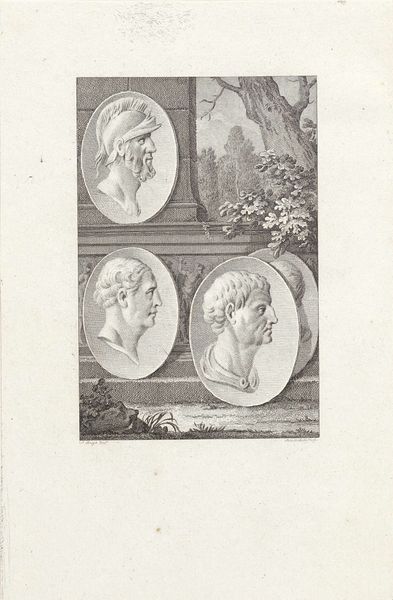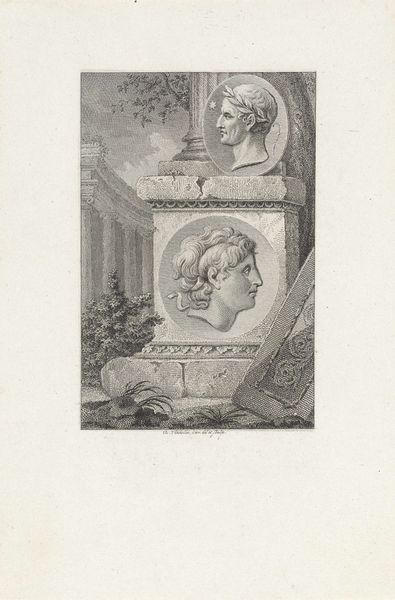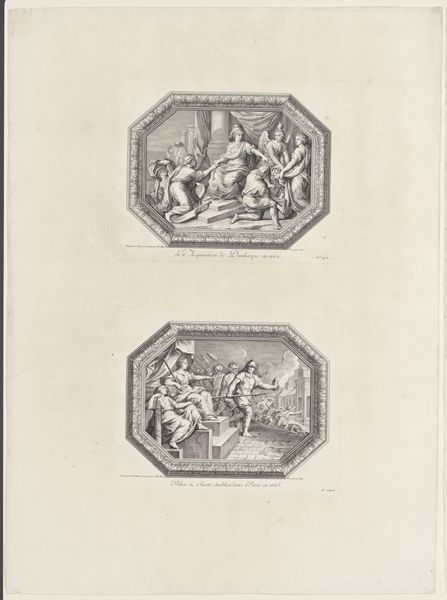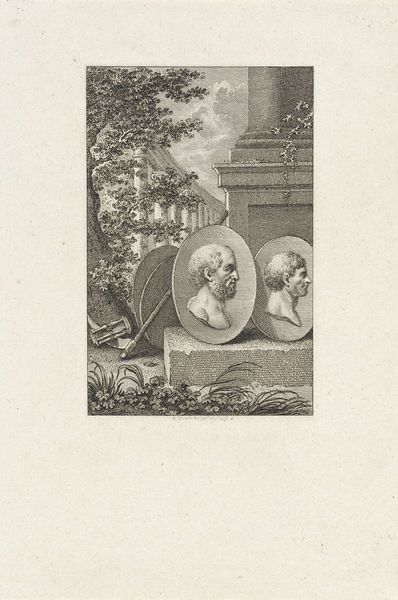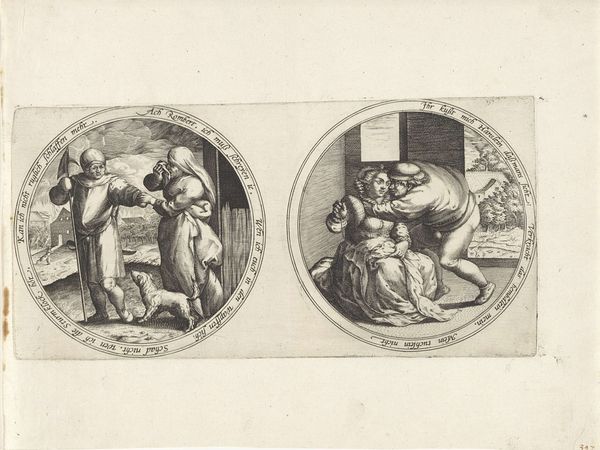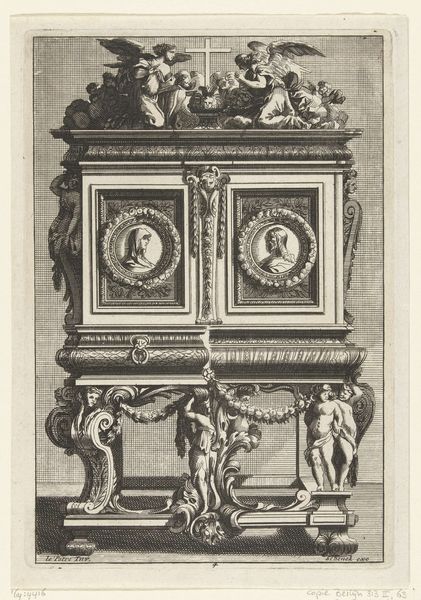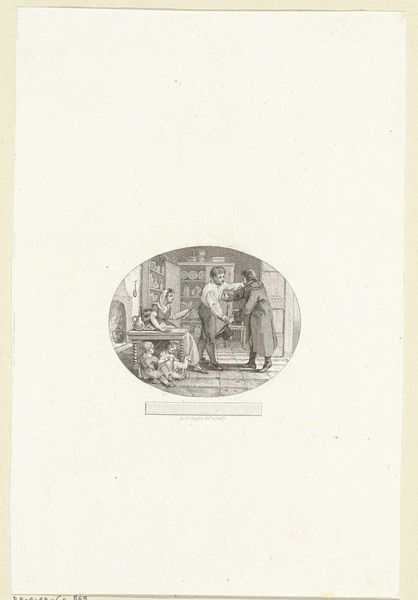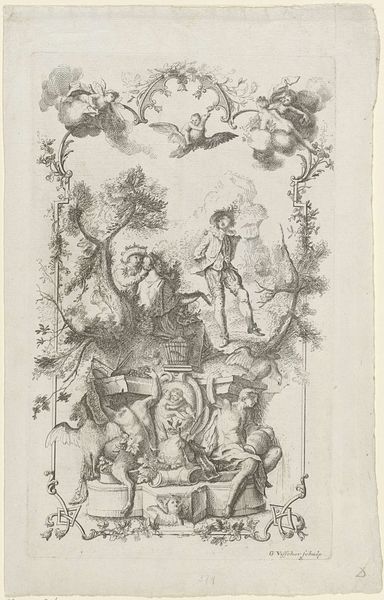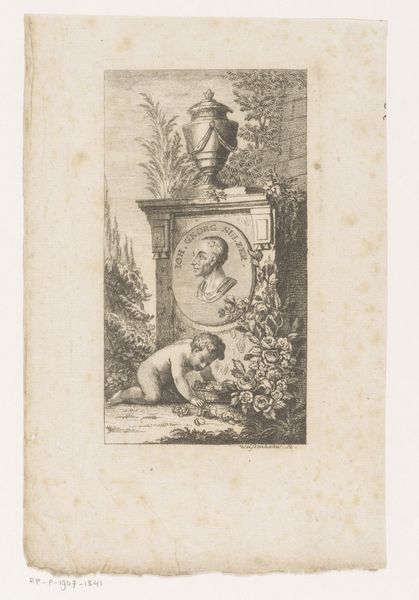
print, engraving
#
portrait
#
neoclacissism
# print
#
old engraving style
#
classical-realism
#
column
#
sketchbook drawing
#
history-painting
#
engraving
Dimensions: height 237 mm, width 153 mm
Copyright: Rijks Museum: Open Domain
This print of Medallions with portraits of Lycurgus and Numa Pompilius was made by Reinier Vinkeles. It is a great example of engraving, a process that relies on the skillful use of sharp tools to incise lines into a metal plate, which is then inked and printed. The crispness of the lines, and the subtle gradations of tone that define the faces and surrounding objects are a testament to the engraver's control. Think of the incredible pressure needed to manipulate the burin across the copper, and the patient accumulation of tiny marks to create the overall image. Prints like this one played a crucial role in disseminating knowledge, particularly in the 18th century. They allowed for the mass production of images, making art and information accessible to a wider audience. The very act of engraving, with its emphasis on precision and duplication, mirrors the Enlightenment's pursuit of objective knowledge and the systematization of information. The work involved in the process highlights how the printmaking was tied to wider issues of labor and consumption.
Comments
No comments
Be the first to comment and join the conversation on the ultimate creative platform.
